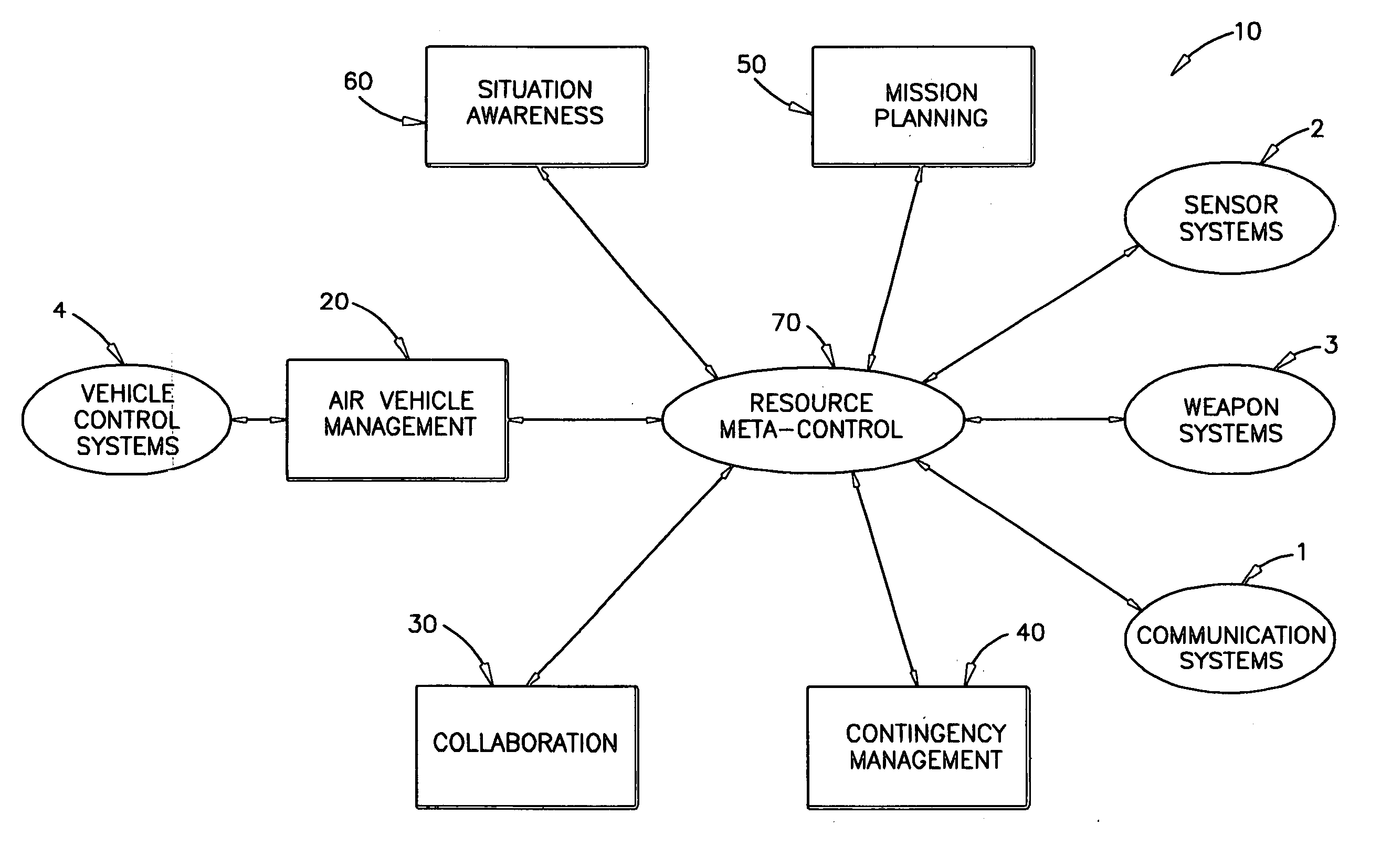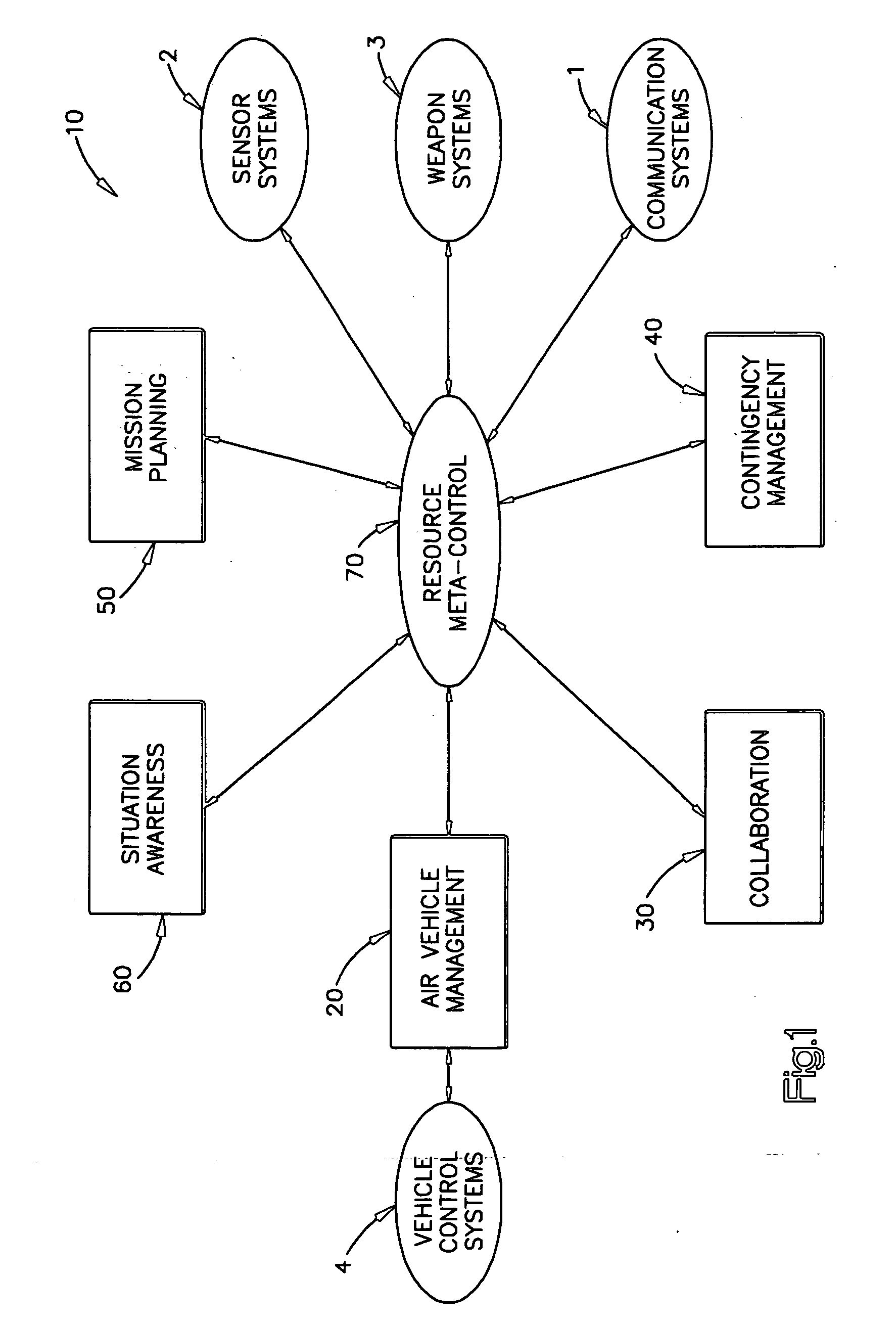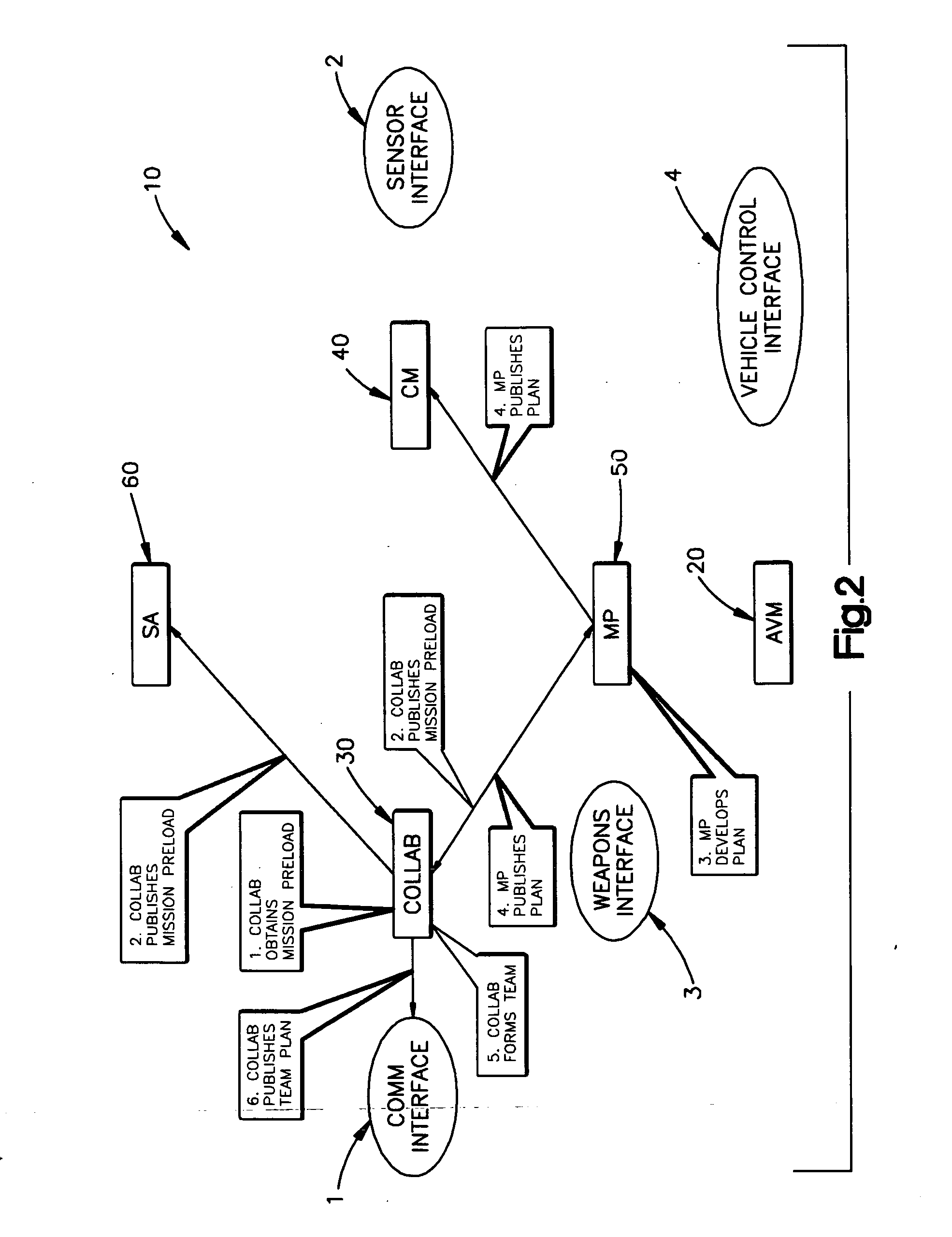Collaborative system for a team of unmanned vehicles
a technology for unmanned vehicles and cooperative systems, applied in surveying, distance measurement, instruments, etc., can solve problems such as system constraints, degrade the critical mission effectiveness of the unmanned vehicle team, and persist in communication degradation
- Summary
- Abstract
- Description
- Claims
- Application Information
AI Technical Summary
Problems solved by technology
Method used
Image
Examples
Embodiment Construction
[0023] A system in accordance with the present invention may autonomously collaborate and coordinate teams of unmanned vehicles and members of those teams under the command of a Warfighter. Unmanned teams may extend the vision and the reach of the Warfighter. However, the Warfighter may expend an amount of time managing these unmanned vehicles such that the Warfighter may lose effectiveness as a Warfighter.
[0024] Autonomy may relieve the Warfighter of this burden. By moving the Warfighter's role from control to command, unmanned systems may move from force extension to force expansion. Collaboration provided by the system may transform the operation of an unmanned system of vehicles from force expansion to force multiplication. Thus, a Warfighter may perform its duties more effectively, more successfully, and more decisively.
[0025] The system provides an architecture for autonomous planning and control of collaborating teams of unmanned vehicles. The architecture provides collabor...
PUM
 Login to View More
Login to View More Abstract
Description
Claims
Application Information
 Login to View More
Login to View More - R&D
- Intellectual Property
- Life Sciences
- Materials
- Tech Scout
- Unparalleled Data Quality
- Higher Quality Content
- 60% Fewer Hallucinations
Browse by: Latest US Patents, China's latest patents, Technical Efficacy Thesaurus, Application Domain, Technology Topic, Popular Technical Reports.
© 2025 PatSnap. All rights reserved.Legal|Privacy policy|Modern Slavery Act Transparency Statement|Sitemap|About US| Contact US: help@patsnap.com



